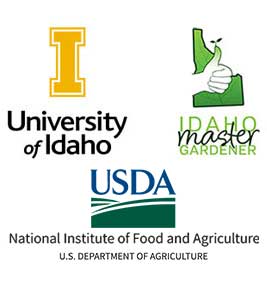Adjusting Cropping Systems Due to Market Impacts from COVID19
Swipe Left or Right to navigate Alerts
Adjusting Cropping Systems Due to Market Impacts from COVID19
All Crops All Locations
Posted on: April 25, 2020 by Juliet Marshall
ADJUSTING CROPPING SYSTEMS AFFECTED BY THE COVID-19
Walsh, O.S., Cropping Systems Agronomist, University of Idaho, Parma R&E Center
Thornton, M., Plant Scientist, University of Idaho, Parma R&E Center
Marshall, J.M., Cereal Cropping Systems Agronomist and Pathologist, Aberdeen R&E Center
Morishita, D., Weed Scientist, University of Idaho, Kimberly R&E Center (retired)
Felix, J., Weed Scientist, Oregon State University, Malheur Experiment Station
and Hatzenbuehler, P.L., Agricultural Economist, University of Idaho, Twin Falls R&E Center
The agricultural sector has begun to struggle with the negative impacts of the COVID-19 pandemic. The economic shocks on Idaho and Oregon agricultural industries have hit dairy, beef onion, and potato producers particularly hard. This is partially driven by the school and restaurant industry closures, where mass quantities of these products are typically utilized. Thus, the impact has been more immediate and direct compared to other commodities.
Following the shelter-in-place orders in Idaho and Oregon, the negative effects of the reduction in food consumption are now coming to light. Most crop producers implement yearly rotations – alternating the annual crops grown on a specific field in a planned pattern in successive crop years. Many Idaho and Oregon growers have been forced to cut their planned potato, barley and onion acreage due to loss of processing contracts for the 2020-21 crop year. With planting under way, many farmers are looking for ways to sustain their productivity.
Adjusting crop rotations may enable producers to stay profitable. Planting different crops such as small grain cereals, beans or corn are some options that may be appropriate for acres initially intended for potatoes and onions. Agricultural practices such as fertilization, herbicide and other pesticide applications already completed last fall and/or this spring are some of the key practices that must be considered. Agricultural inputs that have already been applied could have a significant impact on the alternative crops eventually planted in those fields. Finally, there may be serious implications if the fields are replanted to the same crop as in the previous year. To help growers make more informed planting decisions this spring, the University of Idaho and Oregon State University researchers put the following guidelines in place.
Nutrients/soil fertility
Situation:
• Most onion and potato fields receive relatively low rates of nitrogen fertilizer (less than 100 pounds per acre) prior to planting.
• Both crops traditionally receive high applications of phosphorus and potassium at the time of bedding in the Fall.
Recommendations:
• Take a new soil sample (2 ft depth) now to determine the current levels of nutrients in each field. For soil testing instructions, please refer to Soil Sampling guide.
• If the soil contains more than 150 pounds of nitrogen per acre in 2 ft sample – beans are not recommended (excessive nitrogen in the soil will hinder nodulation in bean roots). If soil nitrogen levels suggest that a bean crop may be successful in a field, levels of phosphorus and potassium must be considered. If the soil contains at least 120 ppm of potassium in the 12 inch-sample – no additional potassium fertilization is required. Furthermore, soils containing more than 30 ppm (12-inch sample, Olson) require no additional phosphorus, even at the highest free lime content. For complete information regarding bean crop nutrient management, please refer to the Southern Idaho Fertilizer Guide: Beans.
• Spring wheat may be a good choice for the fields relatively high in nitrogen. An irrigated soft white spring wheat crop with a yield potential of 120 bushels per acre (typical for southern Idaho) requires a total of 240 pounds of nitrogen per acre. As a rule of thumb, two pounds of available nitrogen per bushel are required for irrigated soft white spring wheat. Hard red and white spring wheat requires additional nitrogen, in the range of 2.5 to 3.0 pounds of nitrogen per bushel with additional nitrogen top-dressed at heading to flowering to meet protein requirements. For detailed information on spring wheat nutrient management, refer to Southern Idaho Fertilizer Guide: Irrigated Spring Wheat. Please note, that high levels of phosphorus (above the 20 ppm in the top 12-inch soil sample) may reduce wheat yields. Although addition of potassium to wheat is not required at more than 75 ppm (12-inch soil sample), higher potassium levels should not cause issues for wheat growth.
• Silage corn may be another good option for fields high in nitrogen. For a silage yield of 40-50 tons per acre, at least 100 pounds of nitrogen in the soil (based on the 2 ft soil sample) are recommended. Higher levels of potassium and phosphorus are not an issue for most corn hybrids. For complete information, please refer to Nutrient Management for Field Corn Silage and Grain. Sileage varieties of wheat, triticale and barley are also available.
Herbicides and other pesticides
Situation:
• Most potato fields should not have received herbicides yet. Many onion fields would have had Dual Magnum applied last Fall and may have gotten an application of a soil residual herbicide (Ex. Prowl or Nortron) this Spring.
• Furthermore, fumigants may have already been applied last Fall or this Spring.
Recommendations:
• Make sure to check the label for all pesticides that have been applied to determine plant back restrictions.
• Fields that have received Dual Magnum are suitable for both beans and corn (forage, grain or sweet) planting. Herbicides such as Dual Magnum and Prowl would eliminate the possibility of planting small grain cereal crops like spring wheat or barley.
• Fumigants should not impact subsequent crops. If fumigants have been applied, there should be no damage to the crops themselves, just the additional expense associated with application.
Additional considerations
• For cereals, expect a reduction in yield associated with soil-borne pathogens. Use certified seed with appropriate seed treatments, and plant to a uniform seed depth of about 1 to 1.5 inches in good moisture to allow rapid emergence. Make sure volunteer grasses (including cereals) are removed two-three weeks prior to planting.
• Regarding farm management, the Farm Bureau has several resources available online to help keep you and your staff stay safe and physically and mentally healthy. Such resources include draft email templates to send to staff to inform them of protocols and procedures that are being and/or will be instituted to ensure the safety and health of all is maintained throughout the growing and harvest seasons (https://www.fb.org/land/impact-covid19-on-ag).
• Ensuring that best practices for crop and commodity storage are maintained may help provide opportunities for sales later in the current crop year or early in the 2020-21 crop year as supply chains are re-established or alternative supply chains emerge.
• For cash flow considerations, USDA ARC/PLC program payments for the 2019-20 crop year are expected to be made in October 2020. PLC payments for producers with base acres in wheat remain likely despite an upward change in the estimated marketing year average (MYA) price 2019-20 in the USDA WASDE report for April 9, 2020 from the March report (from $4.55/bu to $4.60/bu, with a reference price of $5.50/bu). The 2019-20 barley MYA remained unchanged at $4.60, and a PLC payment is still expected due to a reference price of $4.95/bu. The MYA price for corn was revised downward from $3.80/bu to $3.60/bu, so a PLC payment may now also be made for corn (reference price of $3.70/bu).
• Uncertainty remains regarding eligibility, payment rates, and timeline for USDA administered agricultural producer payments under several bills enacted by Congress in response to the COVID-19 pandemic. However, the payments made under the discretion Office of the Secretary of the USDA are likely to be allocated to specialty crops (including potatoes) and other agricultural industries (such as cattle) not covered under Farm Bill Title I (except dairy is expected to be included in both). More details will be provided by the USDA will be forthcoming, but payments may likely occur around October 2020 as is planned with the PLC/ARC programs (https://www.usda.gov/media/press-releases/2020/04/17/usda-announces-coronavirus-food-assistance-program).
» Adjusting_Cropping_Systems_affected_by_the_COVID-_final.pdf



